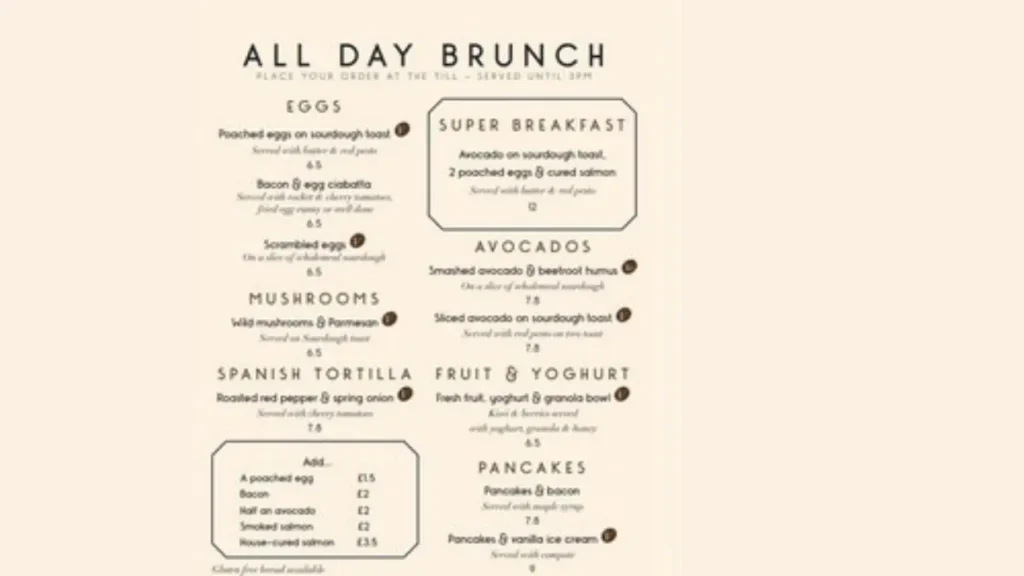London food prices change fast, yet a clear pattern now helps you plan meals without shock at the checkout every week.
This guide explains costs across shops, markets, cafés, and restaurants so you can budget with calm confidence.
We base figures on June 2025 data and everyday observations, keeping the math simple and the tone friendly.
Read on to see how prices affect breakfast, lunch, and dinner, plus tips to shave pounds off the bill.

Monthly Cost
First, picture your average single shopper filling a modest trolley every seven days.
Groceries, snacks, and a few treats add up to £250–£350 per month, a range that defines most city dwellers’ spend.
For a family of four, multiply by three and tighten where possible; home cooks often stay near £900 a month with discipline.
As you track london food prices, remember rent, travel, and energy bills still shape the final household budget.
Groceries
Core items—milk, bread, rice, and pasta—remain the backbone of any frugal menu.
A litre of milk sits near £1.30, while half-kilo bread loaves hover around £1.45, steady despite wider inflation talk.
Pasta and rice cost just under £2 per kilo, and own-brand cereal boxes rarely top £2.60, easing weekday breakfasts.
These figures show london food prices reward shoppers who compare labels, swap brands, and chase multibuy deals.
| Item (June 2025) | Typical Range | Good Sale Price |
|---|---|---|
| Milk 1 L | £1.27–£1.36 | £1.05 |
| Bread 0.5 kg | £1.44–£1.46 | £1.10 |
| Rice 1 kg | £1.81–£1.94 | £1.50 |
| Eggs (12) | £3.42–£3.67 | £3.00 |
| Chicken 1 kg | £7.80–£8.30 | £7.00 |
| Apples 1 kg | £2.29–£2.65 | £1.90 |
Fresh Produce

Street markets brighten menus and trim costs at the same time.
Bananas often drop to £1.30 per kilo, while seasonal berries fall sharply after midday calls from eager traders.
Tomatoes swing near £3 per kilo, yet savvy shoppers queue at closing time to grab overflowing bowls for a pound.
When you map London food prices by postcode, outer-zone markets like Brixton or Walthamstow undercut central stalls.
Proteins and Dairy Choices
Chicken remains the go-to protein for families, averaging £8 per kilo for skinless breasts.
Mince beef moves between £6 and £10 per kilo, depending on fat content, with club-card discounts easing the ceiling.
Hard cheese varies wildly; mature cheddar ranges from £8.80 to £9.70 per kilo, but supermarket blocks beat deli wedges.
Tracking prices on protein shows that frozen fillets and larger packs always win on pounds per gram.
Ready Meals and Takeaway Trends

Life moves quickly, so microwave trays and app-ordered bites fill gaps at a price.
Supermarket meal deals bundle a sandwich, drink, and snack for £4–£6, cheaper than most coffee-shop lunches.
Delivery apps list entry-level pizzas near £10, yet promo codes and collection specials pull totals back under a fiver.
Because London food prices climb higher after dark, early-evening orders or lunchtime bargains keep budgets intact.
Eating Out on a Budget
Café breakfasts still delight locals seeking value; a small fry-up costs £12–£15 with tea poured endlessly.
Weekday pub menus push two-course lunches at £18–£24, and refillable filter coffee shields wallets from top-end lattes.
Ethnic eateries—falafel joints, noodle bars, curry cafés—serve filling plates for £8–£12, spices included.
Here, prices prove kinder if you stray from tourist hubs and embrace diverse high-street flavours.
Mid-Range Dining Experience
Date nights land comfortably in family-run bistros or trendy burger spots.
Expect a main, side, and shared dessert for £25–£35 each, plus a modest service charge if you linger.
Add craft drinks and the bill drifts nearer £50 per person, yet early-bird menus slice totals by ten quid.
Such patterns in prices encourage diners to scan set menus, happy-hour boards, and seasonal tastings.
Fine Dining and Special Treats
Michelin-listed rooms transform dinner into theatre, but entry costs reflect the drama.
Tasting menus now start around £120 per patron, exclusive of wine pairings that double numbers in one pour.
Celebratory afternoon teas with skyline views hover at £70, though weekday slots sometimes dip below sixty.
Even at the top, London food prices flex; book lunch sittings, chase soft openings, and watch chefs’ socials for deals.
Smart Ways to Save Money
Small habits stack into major gains across a year.
Shop discount chains, chase yellow-sticker reductions after 7 p.m., freeze extras, and rotate leftovers creatively.
Cooking big batches lowers unit costs, while refill stores cut packaging and pennies on spices, oats, and rice.
Finally, track prices in a notebook or app, compare receipts, and celebrate every pound kept in your pocket.
Conclusion
London’s table is wide, flavorful, and manageable when you steer with knowledge.
Stay curious, mix supermarkets with vibrant markets, and try new cafés off the beaten path.
With this clear view of London food prices, you can dine confidently, nourish well, and still fund the adventures beyond the plate.
Leave a Reply